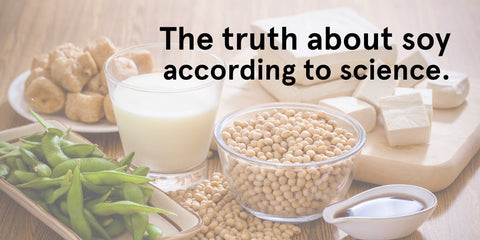Have you been curious about going entirely plant-based? If so, you’ve come to the right place, and you’re not alone. Whether you’re interested in removing all animal products from your diet entirely or beginning more of a plant-forward or flexitarian plan (mostly plants, but not exclusively) adding more plants into your diet can dramatically transform your health. It’s also a more sustainable way of eating for the good of the planet. How you do it is the key to whether or not you and the planet will actually benefit from a diet shift like this one.
In other words, a plant-based diet isn’t automatically a healthy diet. Rather, it’s important to focus on getting the right amounts of both macro- and micronutrients every day and week (not necessarily every meal) and, ideally, finding delicious and creative ways to make it happen. Any time you’re embarking on a new health or diet journey, it’s helpful to have a nutritionist or health expert on standby to help you out, but sometimes that’s time- or cost-prohibitive. That’s why we’re here to help.
Quick Definitions
Before we dive into what defines a healthy plant-based diet for beginners, let’s get some quick definitions out of the way. This way, we all know we’re talking about the same thing as we move forward. First and foremost, a plant-based diet is an umbrella term that encompasses a number of ways of eating. This includes the plant-forward or flexitarian style of eating, in which you mostly eat plants but occasionally consume animal products; vegetarian, in which you eat no meat but may eat eggs and dairy; vegan, in which you eat no meat, eggs, dairy, and sometimes even honey; and raw vegan, in which you either dehydrate, lightly steam, or eat all your foods raw to preserve their native enzymes.
We won’t delve deeply into each of these categories, since plant-based encompasses all of them, but it’s important to understand that each of these diets requires different levels of attention to plant-based nutrition. For example, a vegan or raw vegan is going to need to work a bit harder to get an adequate amount of plant-based protein every day than a vegetarian or flexitarian, because they won’t be consuming eggs or dairy protein, but there are still lots of options.
What Makes a Plant-Based Diet Healthy?
A healthy plant-based diet actually follows a similar pattern to a healthy diet in general: eat complete foods, minimize sugar and unhealthy processed foods, and don’t eat too much. Pretty simple, right? Well, the devil is in the details, as they say. If you’re choosing to eliminate or dramatically curtail an entire food group (meat of any kind), then you’re eliminating or dramatically reducing the nutrients in your diet that those foods provide. So a healthy plant-based diet is all about strategy.
Macronutrients include fat, protein, and carbohydrates with the umbrella macro of calories. Plants are the primary source of carbohydrates in every kind of diet, so we won’t talk much about those — you’ll be getting enough, we promise. We know that meat and animal products are the leading sources of protein calories that most Americans consume, so finding healthy replacements is objective number one in a successful plant-based diet. Choosing healthy fats is number two, and eating a variety of different foods and nutrients or “the rainbow” is number three.
Plant-Based Proteins
Proteins are made up of amino acids, 9 of which are essential, meaning your body can’t produce them on its own. You have to consume them in your food. One of the misconceptions around plant-based protein is that the only good ones are those that have a full profile of amino acids. This misconception goes hand in hand with the idea that you have to have complete protein at every single meal in order to successfully achieve a plant-based diet. While doing that is actually pretty awesome, it’s not 100% necessary 100% of the time. That being said, here are some excellent sources of plant-based proteins:- Soy Products: tofu, tempeh, soy protein powders and shakes, and edamame
- Other Legumes: lentils, beans of all kinds, and peanuts
- Nuts and Seeds: all types, especially almonds
- Quinoa: a pseudograin that’s eaten like rice or pasta
- Seitan: a processed protein made from wheat gluten (not ideal if you’re gluten-free)
- Cruciferous Vegetables: kale, cauliflower, kohlrabi, Brussels sprouts, and especially broccoli
- Mycoproteins: fungus-based proteins used in certain meat substitutes like Quorn
Of this list, only soy and quinoa contain all 9 essential amino acids on their own, and soy has significantly fewer carbohydrates than quinoa. Food combining throughout the day is a great way to ensure that you’re getting what your body needs on the protein front. Currently, the most common food combination strategy is combining beans and rice to get all 9 essential amino acids. Other ideas include adding quinoa and pumpkin seeds to a kale salad, sprinkling sesame seeds and soy sauce on your broccoli stir fry, or dipping crunchy kohlrabi sticks into a yummy hummus. If you don’t have time to cook, opting for a plant-based meal replacement shake at some point throughout the day is a great way to save time and money while ensuring you’re getting the nutrients you need to thrive.
Plant-Based Fats
We now know that a healthy, balanced diet should contain healthy fats and the previous obsession with eating little or no fat has been debunked. However, the controversy around what constitutes “healthy fats” rages on among top experts, with one side saying that most polyunsaturated fats (PUFAs) are terrible for you and recommending monounsaturated fats and saturated fats instead, and the other saying that choosing PUFAs over saturated fats is the way to go. At the very least, all sides agree that certain PUFAs like omega-3 fatty acids, healthy sources of omega-6, and monounsaturated fats like extra virgin olive oil and avocado oil are all-around heart-healthy and great additions to any diet.
Omega-3 fatty acids are anti-inflammatory and underrepresented in the Standard American Diet (aka SAD). They’re also incredibly sensitive to heat and light and should never be used in cooking. Much is made of eating fish to add omega-3s into your diet, but the fish get it from algae that you can supplement if you like. Plant-based sources include flax seeds and flax oil (great addition to salad dressing) and walnuts.
Omega-6 fatty acids are a bit over-represented in the Standard American Diet, due to their presence in most junk foods, fried foods, and processed foods. Cooking oils like canola oil, corn oil, and vegetable oil all contain (likely denatured) omega-6 that contribute to inflammation, so it’s best to avoid them in favor of healthier, less processed sources of omega-6. This includes some of the ingredients on the protein list: nuts and seeds.
Eating the Rainbow
Plants in nature display various colors, whether it’s to attract pollinators or protect against pests. These colors actually translate to phytonutrients like antioxidants, flavonoids, vitamins, and minerals. By eating foods in every color of the rainbow, you’ll be getting a variety of micronutrients to help your body perform at its best every day.
Plant-Based Diet: Good for You and the Planet
As you embark on your plant-based diet journey, your healthy strategy will not only optimize your wellbeing, it will also help the planet. Plants, especially soy, require far less water to grow than livestock and poultry, meaning you’ll be using fewer critical resources and lowering your carbon footprint at every meal.As a beginner, remember to make sure you’re eating enough plant-based protein, stick to healthy fats, and eat the rainbow to maximize your micronutrient intake. There are tons of creative ways to make plant-based eating easy and delicious, including swapping out a meal with a healthy plant-based nutrition shake or bar like Soylent. By doing that, you’ll be taking the guesswork out and ensuring optimal nutrition for your plant-based diet and the planet too.
Sources:
https://www.ncbi.nlm.nih.gov/pmc/articles/PMC3751311/
https://www.medicalnewstoday.com/articles/321474#15-best-vegan-proteins






